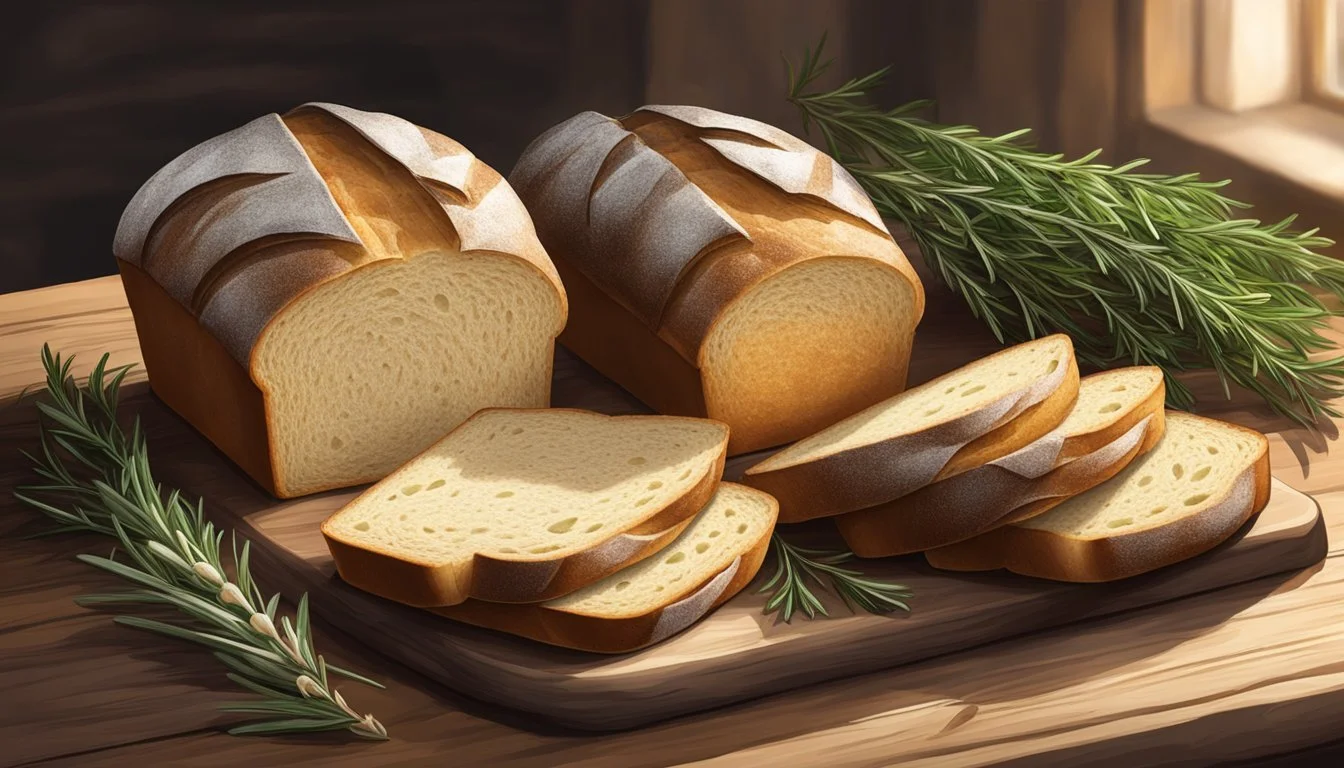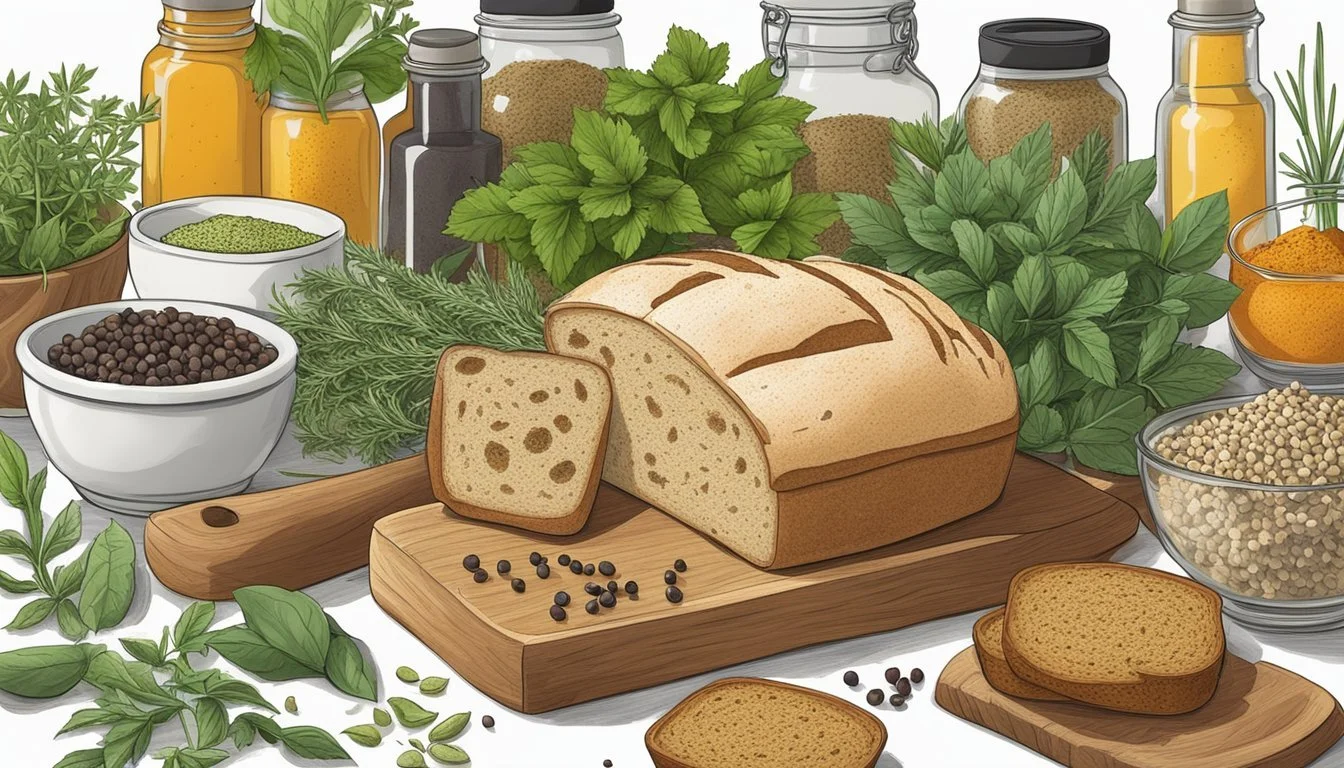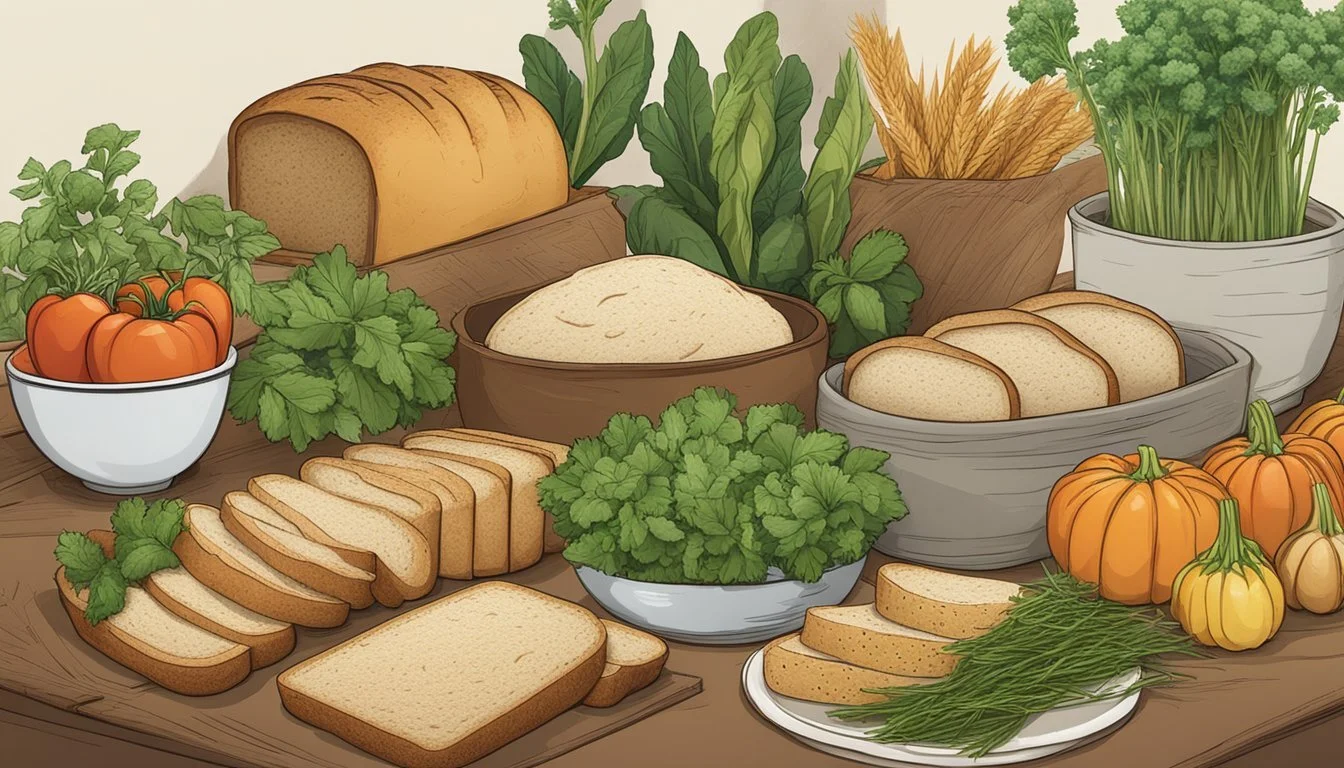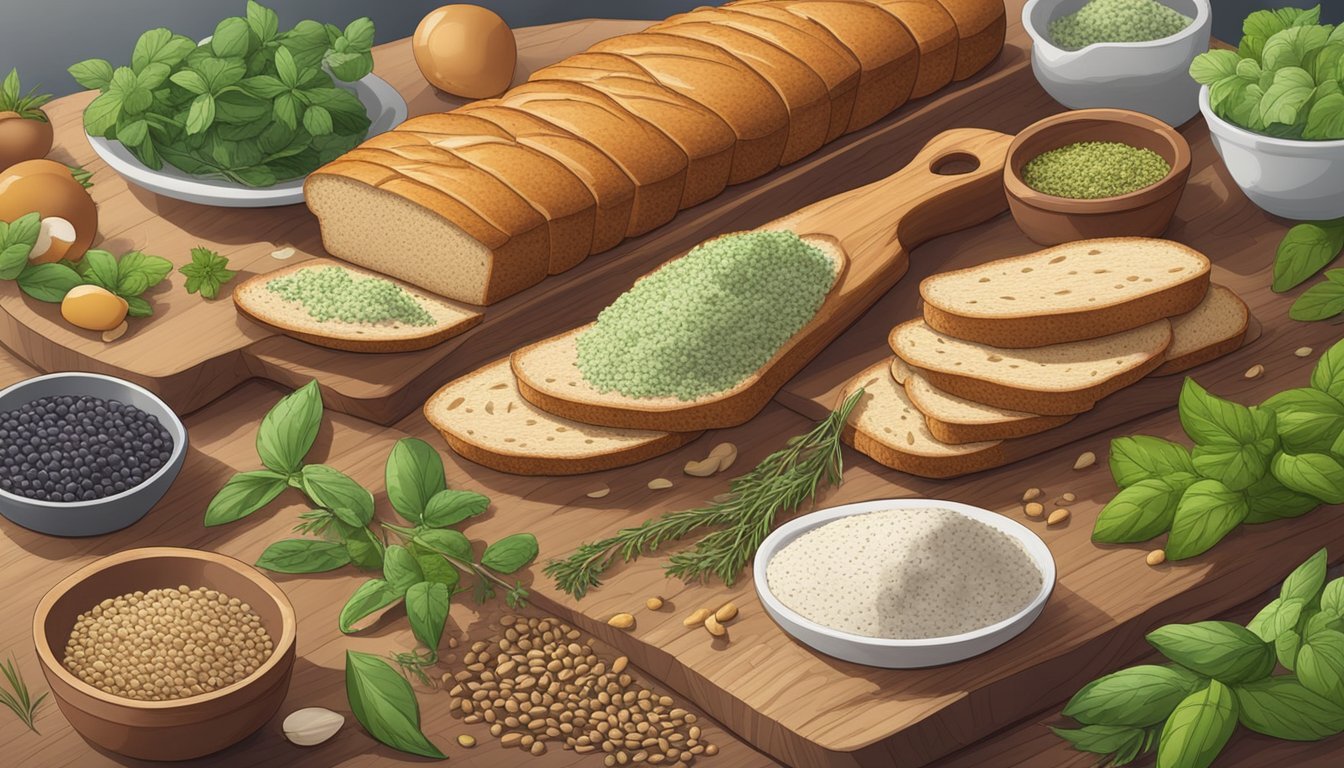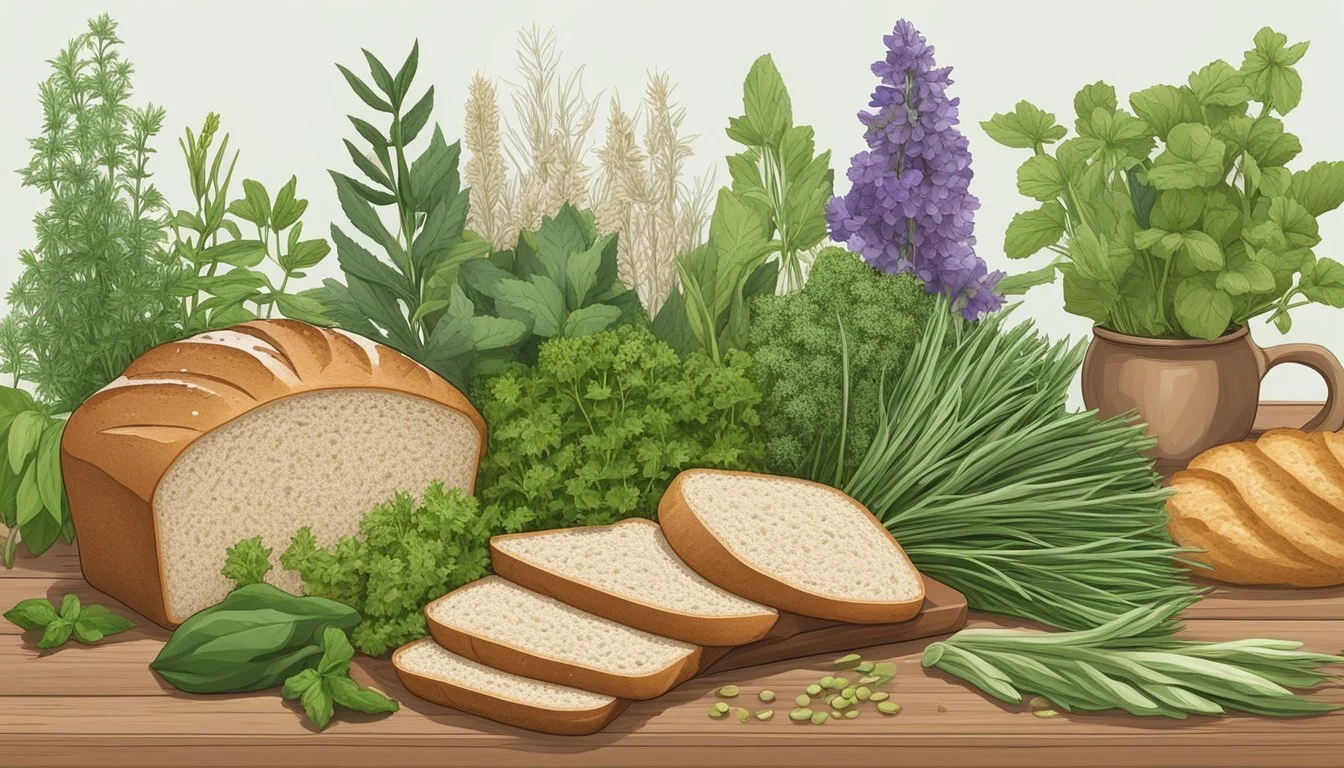Herb Bread Substitutes
Alternatives for Your Favorite Flavors
Exploring options for herb bread substitutes can be both a culinary adventure and a step towards more nutritious eating habits. As individuals search for healthier alternatives to traditional bread, they often discover a delightful variety of bread substitutes that incorporate different herbs and flavors. These alternatives are not just about reducing carbs or avoiding gluten; they're about enhancing the dining experience with new textures and tastes while often providing additional health benefits.
Bread alternatives such as whole grain breads, sourdough, or cauliflower-based options offer a canvas for the rich flavors of herbs like parsley, oregano, and garlic. These substitutes maintain the essence of herb bread by keeping the aromatic experience intact. While traditional garlic bread might be high in refined carbohydrates, these nutritious alternatives provide a more balanced nutritional profile. For instance, a cauliflower-based flatbread can deliver the same savory experience with fewer carbs and a boost of vegetables in one's diet.
They often come packed with health-promoting ingredients. Fermentation, for instance, is a process used in making sourdough bread which improves the bioavailability of nutrients and can make it a more digestible option. On the other hand, using whole grain bread as a base for herb-infused toppings brings the added benefits of fiber and a fuller spectrum of minerals and vitamins. These substitutes not only contribute to a diversified and health-conscious diet but also allow individuals to enjoy the flavors of herb bread in a more wholesome manner.
Understanding Herb Bread
Herb bread brings together the comforting texture of traditional bread with the aromatic presence of herbs and spices, suitable for a variety of culinary uses and dietary preferences.
Components of Herb Bread
Flour: The backbone of any herb bread is the flour, which may vary to meet different dietary needs. Options include whole grain flour rich in fiber, and for those with celiac disease or gluten sensitivity, gluten-free alternatives like sweet potato flour are available.
Herbs and Spices: A combination of fresh herbs such as parsley and dried herbs like oregano add the distinctive flavor profile. The versatility of herbs allows bakers to tailor the bread to specific taste preferences, whether savory or slightly sweet.
Additional Ingredients: While some recipes may include eggs to add richness and bind the ingredients, others may be vegan-friendly, relying on the water and oil to provide moisture.
Flavor Profile and Seasonings
The flavor of herb bread is marked by a harmonious blend of seasonings:
Fresh Herbs: Fresh herbs give a vibrant and bright taste.
Dried Herbs: Dried herbs offer a more concentrated and robust flavor that permeates through the bread.
With an emphasis on savory notes, the herbs chosen can range from single-note simplicity to complex, herby bouquets, impacting the overall flavor and aromatic experience.
Health Considerations
Herb bread can be nutritionally dense, often providing essential nutrients:
Fiber: Integral to maintaining healthy blood sugar levels and aiding digestion.
Carbohydrates: Serve as a primary energy source; whole grains offer complex carbohydrates.
When considering gluten-free options, one must ensure that the substitutes used still offer the requisite nutrients and do not compromise on flavor or texture. Such considerations are particularly important for individuals with celiac disease or gluten sensitivity.
Bread Substitutes Overview
When selecting a bread substitute, individuals look for options that fit into various dietary needs, such as low-carb and gluten-free diets, while also offering nutritional benefits like high protein and fiber content.
Criteria for Selecting Substitutes
When it comes to selecting the right substitute for bread, two primary criteria stand out:
Nutritional Content: Many seek out alternatives that provide a nutrient-rich profile. Ideal substitutes often contain higher levels of protein and fiber while maintaining lower carbohydrate counts.
Dietary Requirements: Gluten-free and low-carb options are high on the list for those with specific dietary needs. These substitutes should mimic the texture and versatility of traditional bread without the associated allergens or high carb content.
Popular Bread Alternatives
Several bread alternatives have gained popularity for their health benefits and ability to cater to various dietary preferences:
Lettuce and Leafy Greens: Employed as wraps, they offer a crisp texture and are virtually carb-free.
Cloud Bread: Known for its low carb and gluten-free qualities, this egg-based bread is a light option.
Tortillas: With cauliflower tortillas available, they serve as a low-carb and gluten-free alternative perfect for wraps and flatbreads.
Wraps: Various vegetable-based wraps, such as those made from spinach or tomatoes, are healthy and gluten-free options.
Sweet Potato Toast: This offers a vitamin-packed, gluten-free base for a range of toppings.
Cauliflower Pizza Crust: A low-carb, gluten-free option that is also versatile in flavor to complement various toppings.
Vegetable-Based Substitutes
Vegetable-based substitutes offer a nutritious alternative to traditional bread, making use of the natural structure and flavor of various vegetables. They can be incorporated into meals to increase fiber content and provide a fresh texture.
Leafy Greens as Wraps
Leafy greens like lettuce and collard greens serve as excellent bread alternatives due to their flexibility and neutral taste, making them ideal for wraps. The large leaves of these greens are perfect for holding a variety of fillings:
Lettuce wraps: can hold everything from grilled chicken to veggies
Collard greens: are sturdy enough to contain heavier ingredients without tearing
Leveraging leafy greens not only cuts down on gluten and carbs but also adds a portion of the daily vegetables needed for a balanced diet, enriching the meal with vitamins and minerals.
Cruciferous and Root Vegetable Solutions
Cauliflower bread is a healthy bread substitute that maintains the taste profile of a dish without the added grains. The versatile nature of cauliflower allows for a range of bread-like products, such as:
Flatbread
Tortillas
Cheesy breadsticks
Other vegetables like sweet potatoes and eggplants provide hearty and fiber-rich alternatives. Sweet potato slices, for instance, can be toasted and utilized as a flavorful base for toppings. Similarly, thick slices of eggplant can be baked or grilled to mimic the consistency of bread in sandwiches and burgers. These options contribute essential nutrients and fiber while catering to those looking for gluten-free solutions.
Protein-Rich Alternatives
Protein-rich bread substitutes offer nutritious alternatives for those looking to increase their protein intake or seeking low-carbohydrate options. Such alternatives are often central to diets focused on muscle building or weight management.
Egg-Based Breads
Cloud bread and oopsie bread are innovative egg-based options high in protein. They are made primarily from eggs, cream cheese, and a leavening agent like baking powder. These bread replacements are light, airy, and can be used much like traditional bread for sandwiches or burgers. Eggs, the main ingredient, not only contribute a significant amount of protein but also provide essential amino acids.
Ingredients for Cloud Bread:
Eggs
Cream cheese
Baking powder
Nutritional Benefits:
High protein
Low carbohydrate
Gluten-free
Meat and Legume Options
For those seeking a more savory bread substitute, meats and legumes offer substantial protein-rich alternatives. Thinly sliced meat can serve as a wrap, similar to a tortilla, providing both flavor and nutrition without the excess carbohydrates. Legumes, when ground into flours, can be used to make flatbreads or pancake-like breads, offering an additional protein boost along with fiber.
Meat Wrap Suggestions:
Turkey
Chicken breast
Roast beef
Legume-based Breads:
Lentil flatbread
Chickpea flour pancakes
These options are not only protein-rich but also tend to be more satiating, which can aid in weight management. Additionally, they provide a range of vitamins and minerals essential for a balanced diet.
Gluten-Free and Low-Carb Options
In the pursuit of healthier lifestyles, consumers often turn to gluten-free and low-carb options. The focus here is on ingredients that cater to such dietary needs, ensuring that those who avoid gluten or minimize carbohydrate intake still enjoy the texture and taste of freshly baked bread.
Flour Alternatives for Baking
For individuals adhering to a gluten-free or low-carb diet, almond flour and coconut flour serve as excellent substitutes for traditional wheat flour. Almond flour, rich in protein and fiber, provides a nutty and moist texture, suitable for bread and other baked goods. Coconut flour, a byproduct of coconut milk production, is dense and high in fiber, often requiring an increased number of eggs to balance out its dryness.
Examples of Low-Carb Flour Substitutes:
Almond Flour: Ideal for a moist, dense bread with a subtly sweet, nutty flavor.
Coconut Flour: Best for those who prefer a lighter, airier texture but require extra binding ingredients due to its dryness.
Grain Substitutes
While wheat grains are commonly used in bread baking, those seeking gluten-free alternatives often turn to fermented grains, such as sourdough made with gluten-free starters, and sprouted grains like Ezekiel bread. The fermentation process reduces antinutrients, making nutrients more available, while sprouting increases the digestibility of grains.
Examples of Grain Substitutes:
Fermented Grains (Gluten-Free Sourdough): Offers a tangy flavor and better nutrient absorption.
Sprouted Grains (Ezekiel Bread): Known for enhanced digestibility and nutrient availability.
Replacements like rye bread might not be suitable for those with celiac disease as rye contains gluten. However, those merely sensitive to gluten or looking to lower their gluten intake rather than avoid it entirely may find rye bread a suitable option. For those strictly avoiding gluten, bread made from gluten-free grains or flatbreads made with gluten-free flours can be savory alternatives.
Herbal and Spice Blends
When crafting bread with rich flavors, one must consider the appropriate mix of herbs and spices to achieve the desired taste profile. These blends offer complex layers of flavor that can transform the simplest bread recipes into aromatic and savory delights.
Creating Herb Mixes
One can start an herb mix with a foundation of Italian seasoning, an aromatic blend typically consisting of rosemary, sage, thyme, and sometimes basil and oregano. For bread, this mix adds a rustic, Mediterranean flavor. To tailor herb mixes further, consider adding garlic or onion powder for depth or a pinch of black pepper for warmth and a subtle bite.
Examples of Herb Mixes:
Classic Italian: Basil, oregano, thyme, rosemary, sage
Herbes de Provence: Thyme, marjoram, rosemary, sage, anise
Simple Savory: Garlic powder, onion powder, black pepper, rosemary
Spices for Enhanced Flavor
Spices can elevate the flavor profile of the bread. For instance, cinnamon can lend a sweet warmth to sweeter breads. For a spicier kick, ground red pepper or a dash of hot pepper sauce may be included in savory bread recipes to add a layer of heat. It is imperative to use spices in moderation to complement, not overpower, the bread's base flavor.
Suggestions for Spice Use:
Add 1/4 teaspoon of cinnamon to sweet bread dough for a warming flavor.
Incorporate a pinch of ground red pepper into dough for a subtle heat.
Blend a few drops of hot pepper sauce into the dough for a moist bread with a spicy undertone.
Health Benefits and Nutritional Profiles
Choosing alternative herb bread substitutes can bolster nutritional intake by providing essential macro and micronutrients while catering to specific dietary needs, such as gluten-free or low-carb diets. These alternatives often offer a vast array of health benefits ranging from improved blood sugar control to increased dietary fiber.
Macro and Micronutrients
Bread alternatives created from vegetables, seeds, or nuts typically feature a lower calorie count and reduced carbohydrate content compared to traditional bread. They also contain a diverse profile of nutrients. For instance:
Cauliflower-based breads are low in carbs and calories, yet rich in vitamins such as vitamin C and minerals like potassium.
Portobello mushroom caps serve not only as a low-carb option but are also a good source of protein, fiber, and B-vitamins.
Egg wraps, also known as cloud bread, are high in protein and contain essential fats, but are low in carbohydrates.
While these substitutes may lack gluten, they compensate by offering a variety of other nutrients, making them a nutritious part of a balanced diet.
Dietary Considerations
Individuals looking to manage their gluten intake or those with celiac disease can greatly benefit from gluten-free bread substitutes like those made from cauliflower or mushrooms. Similarly, for people monitoring their blood sugar levels or following a low-carb diet, these substitutes provide favorable options as they tend to have a lower impact on blood sugar levels.
Bread alternatives are generally dense in fiber — especially those made from nuts and seeds — which aids in digestion and promotes satiety, potentially leading to reduced calorie intake and weight management. However, it's important to consider the presence of antinutrients in certain substitutes, such as phytic acid in some seeds, which can inhibit the absorption of minerals.
In summary, herb bread substitutes can offer a nutritious addition to the diet. They deliver necessary macros like proteins and fats, and important micronutrients, including vitamins and minerals, while also adhering to specific dietary requirements and health considerations.

